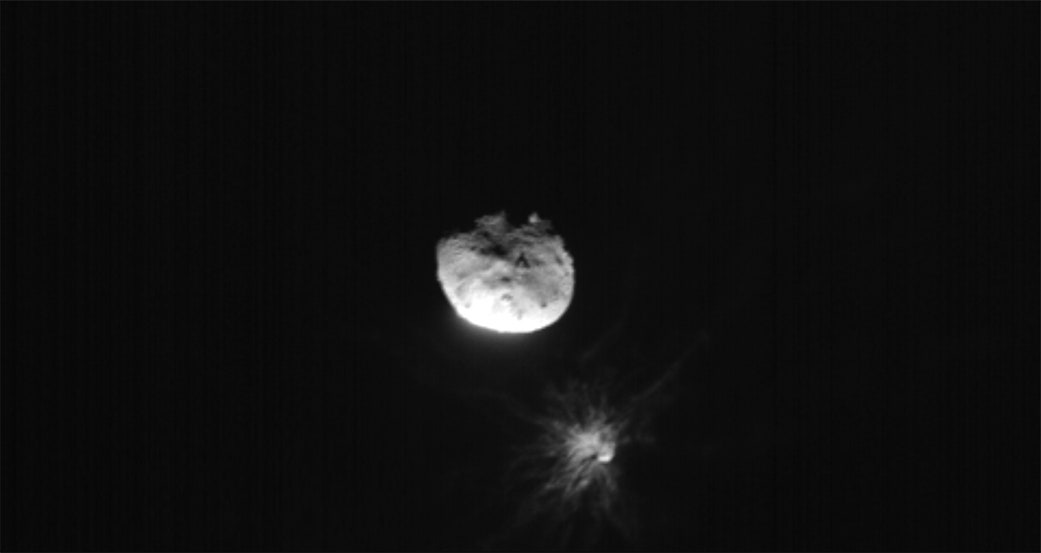Two weeks ago, the asteroid Dimorphos was minding its own business, quietly orbiting around its partner Didymos, when suddenly NASA’s DART spacecraft plowed into it at 14,000 miles per hour.
The space agency and its partners planned that collision to see whether such an impact could alter an asteroid or comet’s trajectory—should humanity ever need to defend the planet from an oncoming space rock. Before the crash on September 26, Dimorphos circled its neighbor like clockwork: one lap every 11 hours and 55 minutes. If the DART test was successful, the proof would be a change in that orbital period, showing that the refrigerator-sized spacecraft had nudged the asteroid onto a different path.
Now the DART team has an answer: It worked—even better than expected. “For the first time ever, humanity has changed the orbit of a planetary body,” said Lori Glaze, director of the Planetary Science Division at NASA headquarters in Washington, at a press conference today revealing the result.
The team would have considered a 10-minute difference a success, said NASA chief Bill Nelson. But DART actually shortened the asteroid’s orbit by a whopping 32 minutes. Dimorphos now takes only about 11 hours and 23 minutes to circle its partner, he said—a significant change, meaning that it is indeed possible to deflect a small asteroid’s path. “NASA is serious about defending the planet,” he said.
Photograph: NASA/ASI
Scientists observed the DART collision several ways. As the probe flew towards its target, it first glimpsed the oncoming space rock with its onboard optical camera, called Draco. Dimorphos is so small and far from Earth that astronomers previously weren’t sure if it would be a solid sphere or a loose dustball; that first look revealed it to be a bumpy, slightly oval-shaped rock, with boulders strewn about.
The craft, along with the camera, were destroyed on impact. But they were being trailed by LICIACube, a briefcase-sized spacecraft developed by the Italian Space Agency that detached from DART 15 days before impact and did its own flyby, snapping photos a few minutes after the collision.
Astronomers also used telescopes on Earth to monitor the collision, including the Southern Astrophysical Research Telescope in Chile, the Las Cumbres Observatory telescopes in South Africa, the Lowell Discovery Telescope in Arizona, as well as the Hubble and the James Webb space telescopes. These telescopes captured what appeared to be rays or a comet-like tail extending from the asteroid, confirming the crash caused rocky debris to fly away.
Scientists on the DART team measured the asteroid’s “before” and “after” orbit by carefully tracking how the light coming from it changed over time. From Earth, the asteroid pair appears as a single dot, but its brightness decreases by about 10 percent every time Dimorphos eclipses Didymos or passes behind its neighbor. (It’s similar to measuring how exoplanets transit in front of the distant stars they’re orbiting.)



